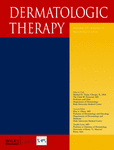Eyelid milia en plaque: a treatment challenge with a new CO2 fractional laser
Abstract
Milia en plaque (MEP) is an uncommon finding characterized by numerous tiny milia within an erythematous area.
Despite its benign and asymptomatic nature, MEP raises cosmetic concerns; moreover, the available treatment modalities for MEP are limited. In view of the few cases described in the literature, no consensus has been reached, with respect to the optimal treatment for MEP, and the choice of therapy should be individualized.
We report a case of eyelid milia en plaque successfully treated with a new CO2 fractional laser that is able to ensure superficial ablation of the epidermis remodeling tissue in-depth, with minimal thermal damage and extremely rapid recovery time.
The results obtained after only two treatments were good, no scarring or dyschromic changes have been registered. At 1 year, just few recurrent milia were present.




